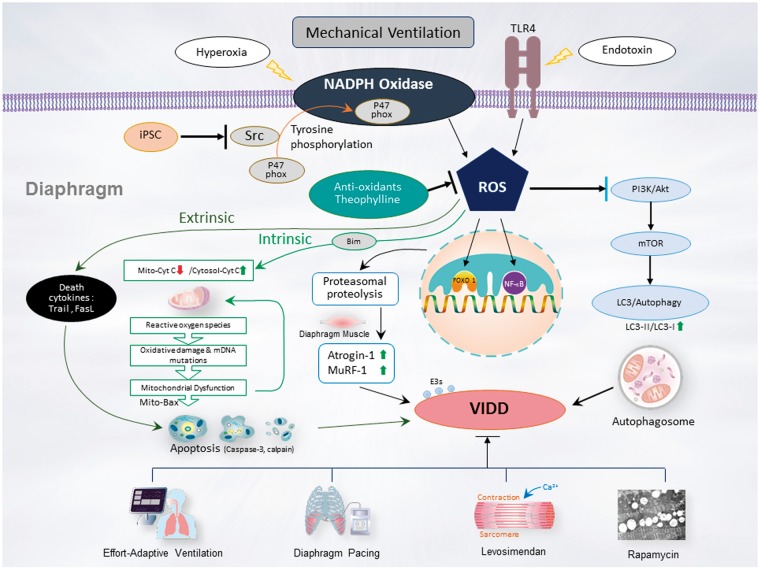Figure 1.
Schematic of the signaling pathway implicated in VIDD development. Endotoxin- or hyperoxia-induced augmentation of mechanical stretch-mediated ROS generation and diaphragm injury are associated with diaphragm proteolysis, apoptosis, mitochondrial dysfunction, autophagy, as well as activation of the caspase-3, calpain, and ubiquitin–proteasome pathways. Diaphragm weakness can be attenuated by administering iPSCs, antioxidants, theophylline, levosimendan, or rapamycin, or through partial support MV or diaphragm pacing through PI3K/Akt, Src, and TLR4 pathway inhibition. Akt: serine/threonine kinase/protein kinase B; Bax: Bcl2-associated X; Bim: Bcl2-interacting mediator; Bnip3: Bcl-2 nineteen-kilodalton interacting protein 3; FoxO1: Class O of forkhead box1; iPSCs: Induced pluripotent stem cells; LC3: light chain 3; mTOR: mammalian target of rapamycin; MuRF-1: muscle ring finger-1; NADPH: nicotinamine adenine dinucleotide phosphate; NF-κB: nuclear factor kappa B; PI3-K: phosphoinositide 3-OH kinase; ROS: reactive oxygen species; TLR4: toll-like receptor 4; VIDD: ventilator-induced diaphragm dysfunction. (A color version of this figure is available in the online journal.)

